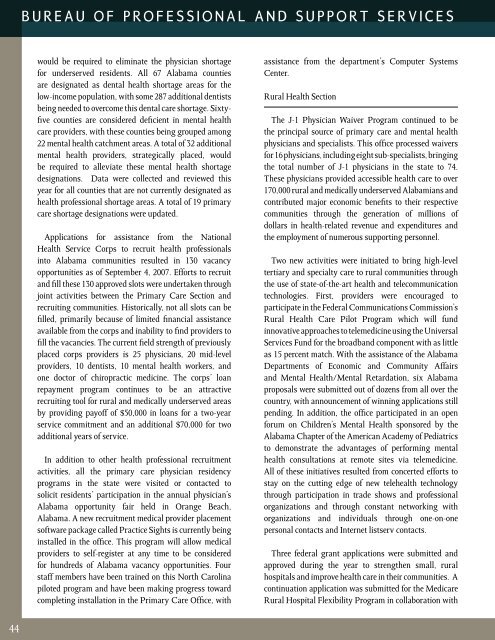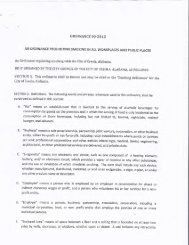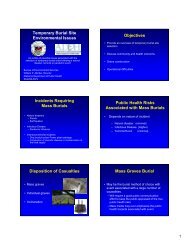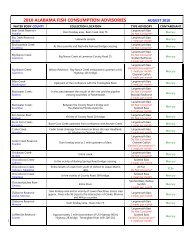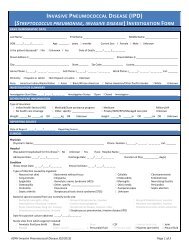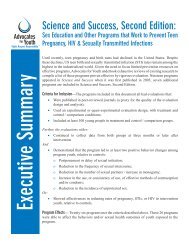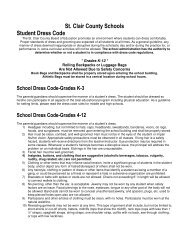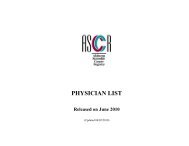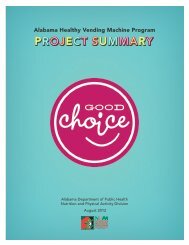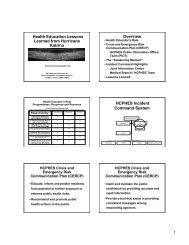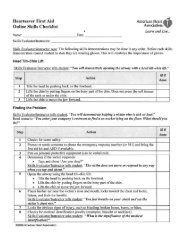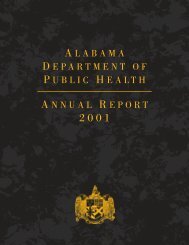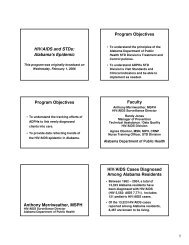2007 - Alabama Department of Public Health
2007 - Alabama Department of Public Health
2007 - Alabama Department of Public Health
Create successful ePaper yourself
Turn your PDF publications into a flip-book with our unique Google optimized e-Paper software.
ureau <strong>of</strong> pr<strong>of</strong>essional and support services<br />
would be required to eliminate the physician shortage<br />
for underserved residents. All 67 <strong>Alabama</strong> counties<br />
are designated as dental health shortage areas for the<br />
low-income population, with some 287 additional dentists<br />
being needed to overcome this dental care shortage. Sixtyfive<br />
counties are considered deficient in mental health<br />
care providers, with these counties being grouped among<br />
22 mental health catchment areas. A total <strong>of</strong> 32 additional<br />
mental health providers, strategically placed, would<br />
be required to alleviate these mental health shortage<br />
designations. Data were collected and reviewed this<br />
year for all counties that are not currently designated as<br />
health pr<strong>of</strong>essional shortage areas. A total <strong>of</strong> 19 primary<br />
care shortage designations were updated.<br />
Applications for assistance from the National<br />
<strong>Health</strong> Service Corps to recruit health pr<strong>of</strong>essionals<br />
into <strong>Alabama</strong> communities resulted in 130 vacancy<br />
opportunities as <strong>of</strong> September 4, <strong>2007</strong>. Efforts to recruit<br />
and fill these 130 approved slots were undertaken through<br />
joint activities between the Primary Care Section and<br />
recruiting communities. Historically, not all slots can be<br />
filled, primarily because <strong>of</strong> limited financial assistance<br />
available from the corps and inability to find providers to<br />
fill the vacancies. The current field strength <strong>of</strong> previously<br />
placed corps providers is 25 physicians, 20 mid-level<br />
providers, 10 dentists, 10 mental health workers, and<br />
one doctor <strong>of</strong> chiropractic medicine. The corps’ loan<br />
repayment program continues to be an attractive<br />
recruiting tool for rural and medically underserved areas<br />
by providing pay<strong>of</strong>f <strong>of</strong> $50,000 in loans for a two-year<br />
service commitment and an additional $70,000 for two<br />
additional years <strong>of</strong> service.<br />
In addition to other health pr<strong>of</strong>essional recruitment<br />
activities, all the primary care physician residency<br />
programs in the state were visited or contacted to<br />
solicit residents’ participation in the annual physician’s<br />
<strong>Alabama</strong> opportunity fair held in Orange Beach,<br />
<strong>Alabama</strong>. A new recruitment medical provider placement<br />
s<strong>of</strong>tware package called Practice Sights is currently being<br />
installed in the <strong>of</strong>fice. This program will allow medical<br />
providers to self-register at any time to be considered<br />
for hundreds <strong>of</strong> <strong>Alabama</strong> vacancy opportunities. Four<br />
staff members have been trained on this North Carolina<br />
piloted program and have been making progress toward<br />
completing installation in the Primary Care Office, with<br />
assistance from the department’s Computer Systems<br />
Center.<br />
Rural <strong>Health</strong> Section<br />
The J-1 Physician Waiver Program continued to be<br />
the principal source <strong>of</strong> primary care and mental health<br />
physicians and specialists. This <strong>of</strong>fice processed waivers<br />
for 16 physicians, including eight sub-specialists, bringing<br />
the total number <strong>of</strong> J-1 physicians in the state to 74.<br />
These physicians provided accessible health care to over<br />
170,000 rural and medically underserved Alabamians and<br />
contributed major economic benefits to their respective<br />
communities through the generation <strong>of</strong> millions <strong>of</strong><br />
dollars in health-related revenue and expenditures and<br />
the employment <strong>of</strong> numerous supporting personnel.<br />
Two new activities were initiated to bring high-level<br />
tertiary and specialty care to rural communities through<br />
the use <strong>of</strong> state-<strong>of</strong>-the-art health and telecommunication<br />
technologies. First, providers were encouraged to<br />
participate in the Federal Communications Commission’s<br />
Rural <strong>Health</strong> Care Pilot Program which will fund<br />
innovative approaches to telemedicine using the Universal<br />
Services Fund for the broadband component with as little<br />
as 15 percent match. With the assistance <strong>of</strong> the <strong>Alabama</strong><br />
<strong>Department</strong>s <strong>of</strong> Economic and Community Affairs<br />
and Mental <strong>Health</strong>/Mental Retardation, six <strong>Alabama</strong><br />
proposals were submitted out <strong>of</strong> dozens from all over the<br />
country, with announcement <strong>of</strong> winning applications still<br />
pending. In addition, the <strong>of</strong>fice participated in an open<br />
forum on Children’s Mental <strong>Health</strong> sponsored by the<br />
<strong>Alabama</strong> Chapter <strong>of</strong> the American Academy <strong>of</strong> Pediatrics<br />
to demonstrate the advantages <strong>of</strong> performing mental<br />
health consultations at remote sites via telemedicine.<br />
All <strong>of</strong> these initiatives resulted from concerted efforts to<br />
stay on the cutting edge <strong>of</strong> new telehealth technology<br />
through participation in trade shows and pr<strong>of</strong>essional<br />
organizations and through constant networking with<br />
organizations and individuals through one-on-one<br />
personal contacts and Internet listserv contacts.<br />
Three federal grant applications were submitted and<br />
approved during the year to strengthen small, rural<br />
hospitals and improve health care in their communities. A<br />
continuation application was submitted for the Medicare<br />
Rural Hospital Flexibility Program in collaboration with<br />
44


